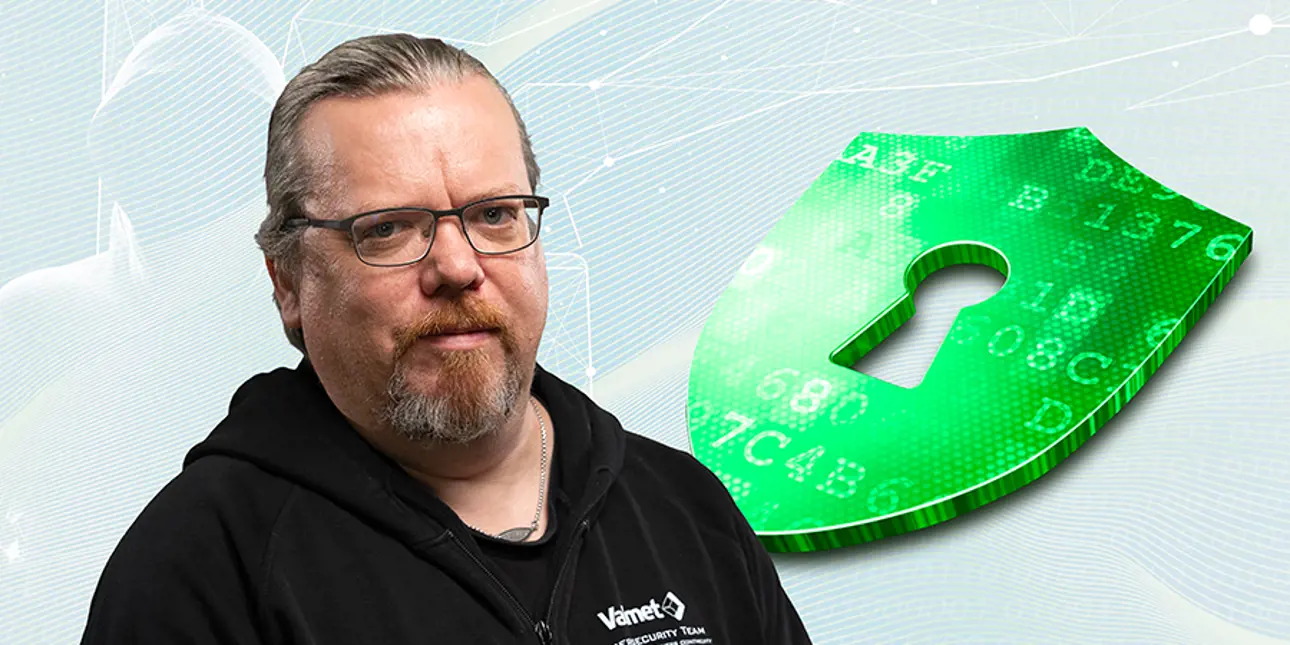OT cybersecurity: Move beyond monitoring to true protection
When cyber threats hit your production environment, monitoring alone isn’t enough. You need protection that stops attacks before they impact operations.

Cyber threats against operational technology (OT) systems are becoming faster, more complex, and harder to catch. The ongoing global conflicts highlight how vulnerable critical sectors like energy, telecoms, water, and heating are to cyber attacks.
Monitoring tools alert you when an attack is happening, but by then, the damage might already be done. “Protection is the main thing, not detection. Relying on monitoring alone is like having a surveillance camera for your home. You see the intruder, but you don’t stop them,” explains Teemu Kiviniemi, Solution Manager for Valmet OT Cybersecurity.
That’s why moving from detection to active protection is essential. In this article, Kiviniemi explains why intrusion prevention systems (IPS) are a critical layer of OT cybersecurity, and how manufacturers can best implement them.
How to protect your OT networks without disrupting operations
Intrusion prevention systems actively monitor network traffic, detecting and blocking potential security breaches in real time. However, many manufacturers hesitate to use an IPS because they worry about false positives—blocking legitimate traffic and disrupting operations.
Unlike IT networks, where short interruptions are often minor, OT systems can’t afford downtime. “If we block inbound traffic to an email server for an hour, nobody notices. But in OT, downtime can have major consequences,” says Kiviniemi.
Traditional IT cybersecurity approaches like frequent patching don’t translate directly to OT, where systems are complex, long-lived, and require careful validation. Instead, it’s best to work directly with your OT vendor for effective cybersecurity.
“We evaluate and test every patch to see how it affects the Valmet systems. Only once we’re confident it’s safe do we apply it,” says Kiviniemi.
Virtual patching via intrusion prevention systems offer immediate protection while formal patches are tested. These systems use network policies to block attacks targeting known vulnerabilities—without requiring system updates, restarts, or production downtime.
“This kind of protection only works if you know your OT network inside out—and we do,” adds Kiviniemi.
Key benefits of intrusion prevention systems for OT environments
Intrusion prevention systems bridge the gap between seeing threats and stopping them. Here are the main benefits for manufacturers:
- Block threats before they reach your systems
Unlike detection-only systems, an IPS stops attacks before they reach your critical systems. This proactive approach supports NIS2 compliance, giving operators the visibility and protection regulators expect. - Secure your systems across their lifecycle
When your OT vendor delivers cybersecurity, you get lasting, unified support. This makes it easier to maintain robust protection over the years. - Meet evolving cybersecurity regulations
ISA/IEC 62443-3-3 is fast becoming the benchmark for industrial cybersecurity. A certified IPS like Valmet DNAe— the world’s first fully web-based system to reach system-level ISASecure SSA certification—ensures your operations comply with regulations.
“Our customers can trust that they meet all required standards. That’s the point of the certification—it makes everyone’s life easier,” says Kiviniemi.
Implementing an intrusion prevention system
Moving from detection to prevention is easier when you work with your OT vendor and leverage local expertise, “Listen to your vendor and use OT-specific technologies, because OT is different from IT,” Kiviniemi advises.
If you operate multiple plants with different vendors, trying to standardize everything from an IT perspective typically doesn’t deliver the best results. “It’s better to work directly with your OT vendor, tell them what you need from cybersecurity, and let them put in place solutions that actually work for your systems,” says Kiviniemi.
At Valmet, local teams are trained to deploy and maintain IPS systems, meaning protection is applied consistently across your production environment.
“We have an extremely good and close cooperation with TXOne Networks, a global leader in ICS and industrial IoT (IIoT) security,” notes Kiviniemi. TXOne solutions enable Valmet to provide robust endpoint and network protection, vulnerability management, and asset visibility delivered as comprehensive security services to help meet requirements like NIS2.
With this strong security foundation in place, you get peace of mind knowing your industrial environment stays protected.
Move beyond monitoring to true protection
Contact us to discover how our cybersecurity services and Valmet DNAe can support your digital transformation.
Contact us
